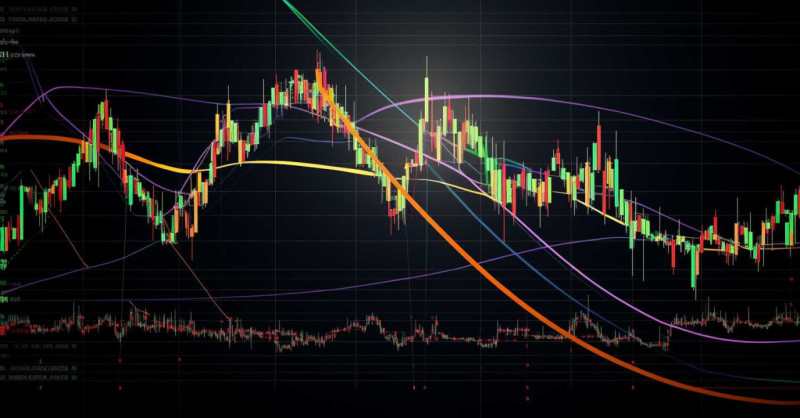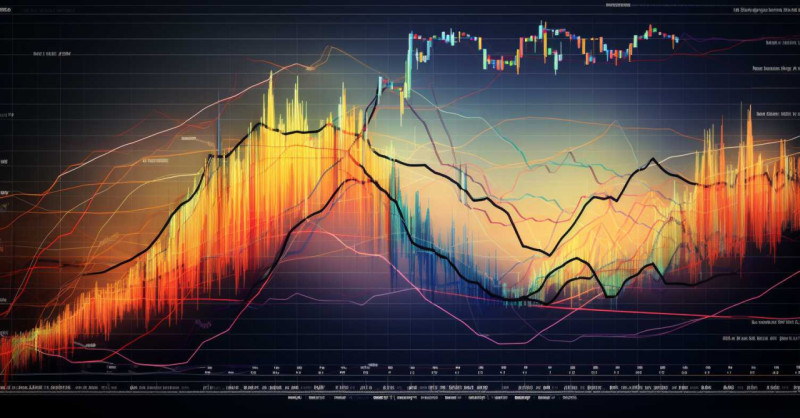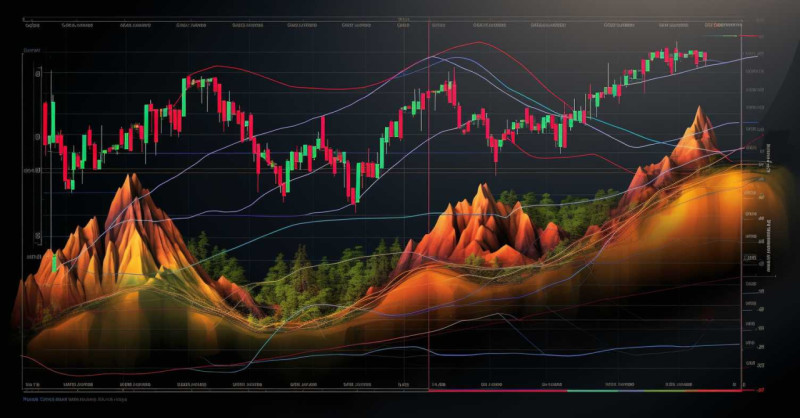
Introduction
Technical analysis is a cornerstone of trading strategies worldwide, serving as a potent method for predicting future price trends by analyzing historical market data, with a particular focus on price and volume. This approach provides traders with an array of tools and techniques to help assess and predict price movements, with momentum indicators standing out as a particularly important instrument.
Momentum indicators, a subset of technical analysis tools, are crucial in assessing the speed or force behind a change in asset prices. They are designed to measure the rate of price change, or "momentum," over a specified time period, hence the name. These indicators are much more than simple trend gauges; they provide traders with invaluable data on potential price reversals, market strength, and periods of consolidation.
The significant role of momentum indicators in technical analysis is multifold. Firstly, they provide important signals regarding the entry and exit points for traders, aiding in the decision-making process. Secondly, they are often used to confirm the strength of a trend, acting as a validation tool for other trading signals. Lastly, they can help identify periods of overbuying or overselling, potentially alerting traders to upcoming market reversals.
In this comprehensive article, we aim to provide a holistic view of the role and operation of momentum indicators in technical trading. We will first delve deeper into the principles of technical analysis, followed by a detailed exploration of the nature and operation of momentum indicators. We will then discuss various types of momentum indicators, elucidating their specific functions and application strategies. Following this, we will delve into the practical application of these indicators, showcasing how traders use them in real-world scenarios, and discussing their benefits and limitations. In doing so, we hope to equip readers with a solid understanding and appreciation of the importance of momentum indicators in the trading landscape.
Technical Analysis: An Overview
Definition and basics of technical analysis
At its core, technical analysis is a trading discipline that involves the evaluation of investments and identification of trading opportunities through the systematic study of statistical trends. These trends are generally sourced from trading activity data, encompassing elements such as price movement and volume. Unlike their fundamental analysis counterparts—who endeavor to ascertain a security's intrinsic value—technical analysts emphasize the importance of price movement charts and a variety of analytical tools in assessing a security's strength or weakness.
Technical analysis is rooted in three fundamental concepts: that market price reflects all market information, that price movements are not wholly random (following trends), and that 'what is' is more important than 'why it is.' These principles form the cornerstone of technical analysis and guide the application of its various tools and strategies.

Importance and role of technical analysis in trading
The utility of technical analysis in trading is profound and multifaceted. Predominantly, it assists traders in predicting potential future price movements of a security by meticulously analyzing its historical data. Recognizable patterns within this data can serve as reliable indicators of future trading activity, equipping traders with invaluable market insights.
But the value of technical analysis extends beyond just forecasting price trajectories. It plays a critical role in identifying and understanding market trends, evaluating the volatility of securities, and unearthing optimal entry and exit points for trades. Furthermore, it significantly bolsters risk management strategies, helping traders minimize potential losses and optimize gains.
Overview of the tools used in technical analysis, including momentum indicators
Technical analysis encompasses a wide range of tools and techniques, each offering unique insights into market behavior. These include various chart patterns and technical indicators, which themselves can be categorized into trend indicators (like moving averages), volatility indicators (like Bollinger Bands), and volume indicators.
Among these myriad tools, momentum indicators command a significant position. They serve as a vital measure of the speed or rate of change at which the price of an asset is moving. Traders often lean on momentum indicators to identify potential reversals in price, which can serve as robust signals indicating when to buy or sell. In the forthcoming sections, we will undertake a comprehensive exploration of momentum indicators, elucidating their functioning, application, and indispensable role in technical analysis.
Deep Dive into Momentum Indicators
Detailed explanation of what momentum indicators are
Momentum indicators, also known as momentum oscillators, are sophisticated tools utilized within the domain of technical analysis. They measure the speed or rate of change of a security's price movement over a specified period. In essence, these indicators are graphical depictions that illustrate the velocity of price changes for a given asset, signaling the momentum of a bullish or bearish trend.
Momentum indicators are premised on the notion that strong trends are likely to maintain their trajectory over the short term. Therefore, when a momentum indicator illustrates a strong upward trend, it is an indication that the asset's price is likely to continue rising. Conversely, a strong downward trend on the momentum indicator suggests that the asset's price is expected to continue falling.
Additionally, momentum indicators serve a crucial role in identifying potential points of price reversal, thereby providing an indication of whether a particular security may be overbought or oversold. As such, these indicators serve as invaluable decision-making tools, enabling traders and investors to predict potential price movements and adjust their strategies accordingly.
Discussion on how momentum indicators work
Momentum indicators function by comparing the closing price of a security at various points in time. Specifically, they compare the current closing price of a security to its previous closing prices over a certain defined period. The objective is to gauge the speed or velocity of price changes.
In most cases, momentum indicators are displayed as an oscillator – a line graph that moves above and below a baseline. This oscillation gives a graphical representation of how the momentum of the price changes over time. When the momentum indicator line moves above the baseline, it suggests that the price of the asset is on an upward trend, indicating increasing momentum. Conversely, when the momentum indicator falls below the baseline, it signals that the price is on a downward trend, indicating decreasing momentum.
Furthermore, the strength of the trend can often be inferred from the distance of the oscillator from the baseline. The further the oscillator is from the baseline, the stronger the trend is considered to be. When the momentum starts to decline, even while the price continues to rise or fall, it could indicate a forthcoming reversal in the trend. This phenomenon, known as divergence, is one of the key signals that traders look for when using momentum indicators.
By helping to identify when an uptrend or downtrend is gaining or losing strength, momentum indicators can serve as useful tools for traders seeking optimal points for entry or exit in a trade.

Breakdown of the formulas and calculations used in momentum indicators
Calculating momentum indicators involves a combination of mathematical formulas designed to analyze the price data of a security over a specified period. The specific formulas used can vary depending on the exact type of momentum indicator being calculated. Here is a simple breakdown of how these calculations are typically performed.
Basic Momentum Indicator: A fundamental momentum indicator can be calculated by subtracting the closing price of a security a certain number of periods ago from the current closing price. The formula for a basic momentum oscillator, for example over 10 days, could be expressed as:
Momentum = Closing Price (today) - Closing Price (10 days ago)
This results in a momentum value that could be positive, negative, or zero, providing a measure of the rate of change in the price of the security.
Relative Strength Index (RSI): The RSI is a more complex momentum indicator that measures the speed and change of price movements on a scale of 0 to 100. The RSI is calculated using the following formula:
RSI = 100 - [100 / (1 + (Average Gain / Average Loss))]
In this formula, the Average Gain and Average Loss are calculated over a specified period, typically 14 periods.
Moving Average Convergence Divergence (MACD): The MACD is another commonly used momentum indicator that calculates the difference between a security's 26-day and 12-day exponential moving averages (EMA). The formula is as follows:
MACD = 12-Day EMA - 26-Day EMA
These are just a few examples of the formulas used to calculate different types of momentum indicators. These indicators can provide valuable insights into market trends and potential reversals, making them an essential tool in technical analysis.
Different Types of Momentum Indicators
Overview and analysis of the Relative Strength Index (RSI)
The Relative Strength Index (RSI) is a momentum oscillator devised by J. Welles Wilder in 1978. It is one of the most widely used and recognized momentum indicators in technical analysis. The RSI measures the magnitude of recent price changes to evaluate overbought or oversold conditions in the price of a stock or other asset.
The RSI is depicted on a scale from 0 to 100 and is typically used with a period of 14. An RSI value of 70 or above indicates that a security is becoming overbought or overvalued and may be primed for a trend reversal or corrective price pullback. An RSI reading of 30 or below signals an oversold or undervalued condition and potentially an upcoming price increase.
The formula for calculating RSI is as follows:
RSI = 100 - [100 / (1 + (Average Gain / Average Loss))]
Here, the Average Gain and Average Loss are calculated over a defined period, typically 14 periods.
In addition to identifying potential overbought and oversold conditions, the RSI is also often used to spot divergences, where the price and the RSI are heading in opposite directions. These divergences can signal potential trend reversals. For example, if the price is making a series of higher highs and the RSI is making a series of lower highs, it could indicate a potential downward reversal in price.
However, while the RSI is a powerful tool, like all technical indicators, it's not infallible and should be used in conjunction with other technical analysis tools to increase its reliability and accuracy.

Overview and analysis of the Moving Average Convergence Divergence (MACD)
The Moving Average Convergence Divergence (MACD) is a trend-following momentum indicator developed by Gerald Appel in the late 1970s. It reveals changes in the strength, direction, momentum, and duration of a trend in a stock's price.
The MACD involves the use of two lines: the MACD line and the signal line. The MACD line is calculated by subtracting the 26-period Exponential Moving Average (EMA) from the 12-period EMA. The signal line, which is a 9-day EMA of the MACD line, is then plotted on top of the MACD line. The interaction of these two lines is observed for trading signals.
The MACD triggers technical signals when it crosses above (to buy) or below (to sell) its signal line. The speed of crossovers is also taken as a signal of a market is overbought or oversold. MACD helps investors understand whether the bullish or bearish movement in the price is strengthening or weakening.
Moreover, the MACD can also be represented as a histogram. The MACD histogram is calculated as the difference between the MACD line and the signal line. When the histogram is above zero (the MACD line is above the signal line) and starts to shrink, it's a bearish signal. Conversely, when the histogram is below zero (the MACD line is below the signal line) and starts to shrink, it's a bullish signal.
It's crucial to remember that while the MACD can provide valuable insights, no indicator is foolproof, and it should be used in conjunction with other technical analysis tools to ensure more accurate predictions and to manage risk effectively.
Overview and analysis of the Stochastic Oscillator
The Stochastic Oscillator is a momentum indicator that was developed by Dr. George C. Lane in the late 1950s. It compares a particular closing price of a security to a range of its prices over a certain period of time. The oscillator's sensitivity to market movements can be reduced by adjusting the time period or by taking a moving average of the result.
The Stochastic Oscillator is a bounded range indicator, meaning it oscillates between 0 and 100, providing a quantitative measure of overbought and oversold levels. Traditionally, readings over 80 are considered in the overbought range, and readings under 20 are considered oversold. However, these are not hard and fast rules, and some securities may regularly reach overbought or oversold levels without actually reversing course.
The Stochastic Oscillator is typically made up of two lines:
The %K line, which compares the closing price of the security to the range of its high and low prices over a certain period.
The %D line, which is a moving average of the %K line.
The basic formula for the Stochastic Oscillator is:
%K = [(Close - Low) / (High - Low)] * 100
A signal for a potential trading opportunity is usually given when the %K line crosses over the slower %D line. When the %K line crosses above the %D line in the oversold area (below 20), it may generate a buy signal. Conversely, when the %K line crosses below the %D line in the overbought area (above 80), it may generate a sell signal.
Like other momentum oscillators, the Stochastic Oscillator can also be used to identify divergences. If the price of the asset makes a new high while the oscillator fails to reach a new high, it may suggest a trend reversal to the downside. Similarly, if the price makes a new low while the oscillator fails to make a new low, it may suggest a trend reversal to the upside.
As with any technical indicator, the Stochastic Oscillator should not be used in isolation but in conjunction with other technical analysis tools and indicators to improve decision-making accuracy and minimize trading risks.

Overview and analysis of the Rate of Change (ROC)
The Rate of Change (ROC) is a momentum oscillator developed by Fred G Schutzman that measures the percentage change between the most recent price and the price a certain number of periods ago. The ROC can be used to confirm price moves or detect divergences, and it can also be used to identify overbought and oversold conditions.
The formula for calculating ROC is:
ROC = [(Close - Close n periods ago) / (Close n periods ago)] * 100
The ROC is plotted around a zero line. It fluctuates both above and below this line without any upper or lower limits. This characteristic distinguishes it from bound oscillators such as the Relative Strength Index (RSI) and the Stochastic Oscillator.
When the ROC is above the zero line, it indicates a bullish signal as the current price is greater than the price "n" periods ago. When the ROC falls below the zero line, it suggests a bearish signal, indicating that the current price is less than the price "n" periods ago.
The ROC is often used to identify overbought and oversold conditions. For example, if the ROC reaches an extremely high value above the zero line, this could suggest an overbought condition, implying the price may soon reverse lower. Conversely, if the ROC falls to an extremely low value below the zero line, this could suggest an oversold condition, hinting the price may soon bounce higher.
However, like other technical indicators, the ROC should not be used in isolation. Traders should always use ROC in conjunction with other technical analysis tools to confirm signals and to avoid potential false signals.
Comparison and contrast of different momentum indicators
Relative Strength Index (RSI):
RSI is a bounded oscillator, providing clear indications of overbought and oversold conditions with fixed thresholds (usually 30 for oversold and 70 for overbought). It is based on average price gains and losses over a specified period, typically 14. RSI is especially useful when identifying potential price reversals due to divergences between price trends and RSI trends.
Moving Average Convergence Divergence (MACD):
Unlike RSI, MACD is an unbounded oscillator. It measures the relationship between two moving averages of a security's price. It comprises two lines - the MACD line and the signal line, and their crossover points signal potential buy or sell opportunities. MACD also helps to identify potential trend reversals and can be particularly effective in identifying price momentum and direction.
Stochastic Oscillator:
Like RSI, the Stochastic Oscillator is a bounded range oscillator, with values ranging from 0 to 100, typically with thresholds at 20 and 80 for oversold and overbought conditions respectively. It is highly sensitive to market movements, making it useful in volatile markets. It's also valuable for spotting divergences between price trends and oscillator trends, indicating potential reversals.
Rate of Change (ROC):
ROC measures the percentage change in price from one period to the next. It can swing above and below a zero line, indicating positive or negative momentum. High positive values indicate overbought conditions, while low negative values indicate oversold conditions. ROC is relatively simple and straightforward to interpret compared to other momentum indicators.
Each of these momentum indicators provides valuable insights into market conditions and potential trading opportunities, but they have distinct methods and nuances. No single indicator can provide all the answers; hence, a combination of these indicators is often used to confirm signals and increase the odds of successful trading decisions. It's also crucial to consider factors like the trader's individual strategy, risk tolerance, and the specific asset being traded when deciding which indicators to use.

Using Momentum Indicators in Trading
Explanation of How Traders Use Momentum Indicators in Their Strategies
Traders use momentum indicators in several ways within their strategies. Firstly, they serve as a tool for identifying potential entry and exit points. For instance, when an oscillator such as the RSI reaches an extreme value, this could signal that the current price trend may soon reverse, providing an opportunity for a profitable trade. Traders also look for divergences, where the price trend and the trend of the momentum indicator are moving in opposite directions, as this may also indicate a potential trend reversal.
Secondly, momentum indicators can help traders gauge the strength of a trend. If a momentum indicator is rising while the price is also increasing, this is typically seen as a confirmation of the uptrend. Conversely, if the indicator is falling while the price is decreasing, this is typically seen as a confirmation of the downtrend.
Case Study Examples of Momentum Indicator Use in Real Trading Scenarios
Consider a scenario where a trader is monitoring the MACD indicator for a specific stock. The MACD line crosses above the signal line, providing a potential buy signal. However, to confirm this signal, the trader checks the RSI and sees that it is rising but has not yet reached overbought conditions. The trader decides to buy the stock, and subsequently, the price of the stock increases.
In another scenario, a trader might be using the Stochastic Oscillator to trade a currency pair in the forex market. The %K line crosses above the %D line in the oversold region, giving a potential buy signal. The trader also checks the ROC and sees it rising, further confirming the buy signal. The trader buys the currency pair, and the price subsequently increases.
Benefits and Potential Risks of Relying on Momentum Indicators
Momentum indicators provide several benefits. They can help traders identify potential trading opportunities, confirm the strength of price trends, and provide warnings of possible price reversals. They also help traders identify overbought or oversold conditions, which can be especially useful in volatile markets.
However, there are also potential risks associated with relying on momentum indicators. Firstly, these indicators can produce false signals, potentially leading to losses. This is especially true in sideways or range-bound markets where price fluctuations can cause indicators to give misleading signals.
Secondly, while momentum indicators can identify overbought and oversold conditions, they don't provide any indication of when a reversal will occur. A security can remain in overbought or oversold conditions for an extended period, and price can continue in the same direction, leading to potential losses for traders who rely solely on these signals.
Therefore, it's crucial for traders to use momentum indicators in conjunction with other technical analysis tools, and to have a robust risk management strategy in place. It's also important to remember that past performance is not indicative of future results, and all trading involves risk.

Conclusion
In this article, we've traversed the intriguing world of momentum indicators in technical analysis for trading. We delved into the basics of technical analysis, defining its importance and role in the trading sphere. We further explored the nuances of momentum indicators, discussing their functionality, the mathematical principles underpinning them, and their significance in understanding market dynamics.
Specifically, we analyzed some of the widely used momentum indicators such as the Relative Strength Index (RSI), Moving Average Convergence Divergence (MACD), Stochastic Oscillator, and the Rate of Change (ROC). Each of these indicators, as we've seen, offers unique insights into market conditions, presenting traders with valuable information about potential entry and exit points, trend strength, and the possibility of trend reversals.
However, it's vital to remember that while momentum indicators are powerful tools, they aren't foolproof. They each have their own strengths and weaknesses and can occasionally produce false signals. Therefore, successful trading requires using a combination of these tools, alongside a deep understanding of the market and a sound risk management strategy.
The world of trading is continually evolving, and as such, your knowledge should too. As we've unpacked the vital role of the momentum indicator in technical analysis, it's clear to see its importance in successful trading. We encourage you to continue studying, practicing, and understanding these indicators to improve your trading strategy further.
As with all aspects of trading, understanding the momentum indicator and its application in technical analysis is a journey. With the right knowledge, experience, and a bit of practice, you can effectively use momentum indicators to navigate the ever-changing tides of the financial markets.
















